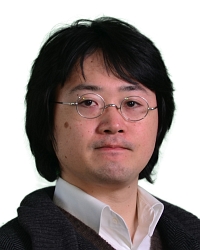TR2016-081
Crossover Block Modulation with Complementary Codes Superposition
-
- , "Crossover Block Modulation with Complementary Codes Superposition", OptoElectronics and Communications Conference (OECC), July 2016.BibTeX TR2016-081 PDF
- @inproceedings{Yoshida2016jul,
- author = {Yoshida, Tsuyoshi and Kojima, Keisuke and Koike-Akino, Toshiaki and Millar, David S. and Dohi, Keisuke and Matsuda, Keisuke and Parsons, Kieran and Kubo, Kazuo and Uto, Kenichi and Sugihara, Takashi},
- title = {{Crossover Block Modulation with Complementary Codes Superposition}},
- booktitle = {OptoElectronics and Communications Conference (OECC)},
- year = 2016,
- month = jul,
- url = {https://www.merl.com/publications/TR2016-081}
- }
- , "Crossover Block Modulation with Complementary Codes Superposition", OptoElectronics and Communications Conference (OECC), July 2016.
-
MERL Contacts:
-
Research Areas:
Abstract:
Coherent communication has been widely deployed with the assistance of digital signal processing. Dual-polarized quadrature phase-shift keying (DP-QPSK) is a standard solution for both long-haul and metro 100 Gb/s optical transport [1]. To optimize the spectral efficiency and the reach under each of these transmission conditions, both higher and lower order modulation have been investigated. Besides regular 2N quadrature amplitude modulation with polarization multiplexing for 2N bit/symbol, intermediate solutions are considered since 2N bit/symbol may not have enough granularity to maximize the system capacity in all cases. Polarization-switched quadrature phase-shift keying (PSQPSK)[2] is an early solution having an intermediate spectral efficiency of 3 bit/symbol, which is classified as part of a 4-dimensional modulation family. PS-QPSK shows good linear and reasonable nonlinear performance and efficiently fills the gap in spectral efficiency between DP-QPSK and DP binary phase-shift keying (DP-BPSK) [3]. Single paritycheck (SPC) coded DP-QPSK is equivalent to PS-QPSK. The coding-based solution is hardware-efficient because it does not require changes to the optical transmitters of a standard DP-QPSK configuration. In long-haul transmission, fiber nonlinearity and polarization dependency are critical factors limiting the reach. To reduce the degradation, state of polarization (SOP) management has been intensively investigated for non-coherent schemes [4]. Biasing the SOP increases degradations such as polarization dependent loss (PDL), polarization hole burning, and cross polarization modulation. We also have to be aware of this for polarization multiplexed coherent schemes [5]. PS-QPSK takes two SOPs with orthogonal linear polarizations and the SOP bias will depend on the bit sequence. Forward error correction (FEC) with bit-interleaving helps to mitigate the effects of PDL, but it is not enough.Diversity transmission such as phase-conjugate modulation and superposition demodulation [6-9] can help to reduce such degradation quite effectively. On the other hand, these signals have themselves so far provided either no or lower coding gain. The best mixture of diversity transmission would be with a concept like phase-conjugation modulation providing coding gain by increasing the Euclidean and/or Hamming distance by employing, e.g., high-dimensional modulation [10]. If we can realize not only SOP diversity and superposition but natural SOP management, additional performance improvement will be expected on transmission lines with strong nonlinearity and polarization dependent degradation. Although a solution for 2 bit/symbol has already been proposed [11], there has, however, so far been no reported solution for 3 bit/symbol transmission to the best of our knowledge. In this paper, we propose three novel 3 bit/symbol modulation schemes, one of which realizes SOP management by crossover superposition of two sets of SPC coded signals over two time slots and two polarizations. Through numerical simulation, we observed 0.8 dB improvement in the presence of interplay of fiber nonlinearity and PDL.

